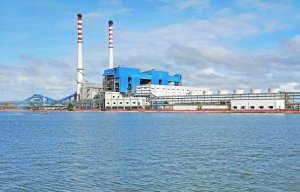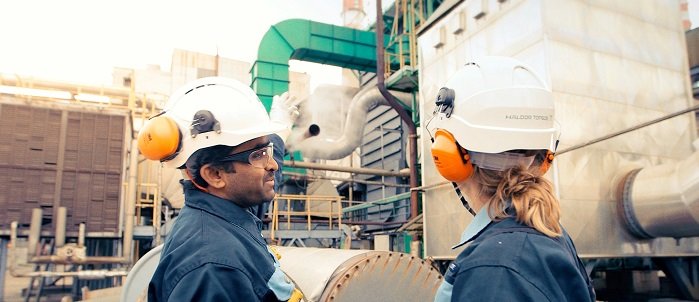
Birla Cellulose plant achieves EU BAT compliance
A new sulphur control solution removes sulphur from emissions at a lower cost than traditional scrubbers.

8th May 2019
Innovation in Textiles
|
Copenhagen

A new sulphur control solution removes sulphur from emissions at a lower cost than traditional scrubbers. © Haldor Topsoe
Haldor Topsoe, a leader in high-performance catalysts and proprietary technology for the chemical and refining industries, has developed Preferential Oxidation Catalysis, a new catalytic solution that is designed to offer viscose manufacturers a highly competitive alternative to costly traditional scrubbing sections for controlling sulphur compounds in off-gases.
The new technology has been demonstrated to selectively treat different sulphur compounds in order to more efficiently remove hydrogen sulfide from emissions, while retaining the valuable carbon disulphide that is reused in the production. In addition, unlike traditional scrubbing, Preferential Oxidation Catalysis does not consume costly sodium hydroxide or produce wastewater, which is troublesome to dispose of, according to the manufacturer.
This innovation was developed and tested in the laboratory and at a small-scale industrial plant in collaboration with Birla Cellulose of the Aditya Birla Group, the world’s leading viscose manufacturer. The aim was to capture sulphur from exhaust gases for reuse in the closed-loop viscose production system, and the results have been encouraging for the commercialisation of the technology.
The next step is building a large-scale demonstration plant in China together with Zhongtai Group in connection with a viscose plant in the Xinjiang province, the company reports. “We are very enthusiastic about testing this concept because the existing sulphur management technologies have expensive shortcomings when it comes to treating lean off-gases from viscose production. With the demonstration plant we expect to validate that this new solution cuts cost, secures efficient reuse of carbon disulfide and reduces sulphur emissions,” explained Mr He, President Assistant, Zhongtai Group.
The demonstration plant will be commissioned later in 2019.
In many cases, viscose manufacturers already use Topsoe’s Wet Sulphuric Acid (WSA) solution to convert sulphur compounds in rich gases to sulphuric acid that can be reused directly in the processing of cellulose to produce viscose. With the addition of preferential oxidation catalysis for lean gases, Topsoe says it now offers viscose manufacturers a complete, highly efficient, and cost-effective sulphur management solution.
Topsoe expects to sign a contract for the first full-scale preferential oxidation catalysis plant with a major international viscose producer in the spring of 2019.

Business intelligence for the fibre, textiles and apparel industries: technologies, innovations, markets, investments, trade policy, sourcing, strategy...
Find out more